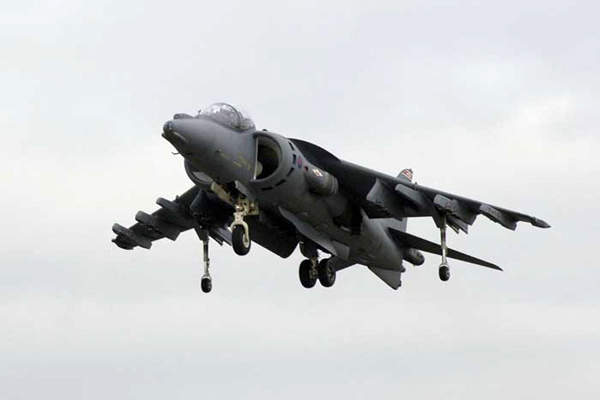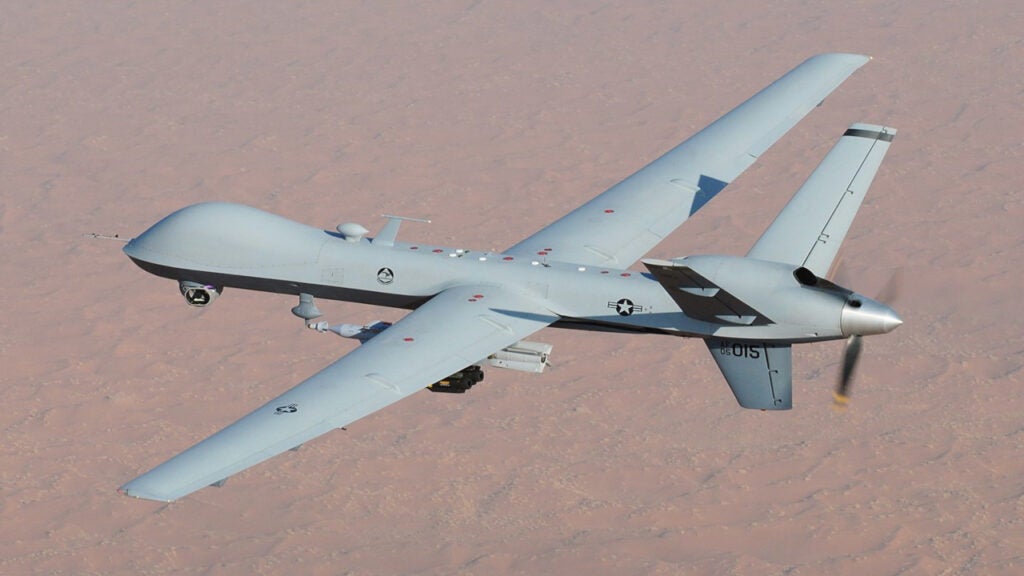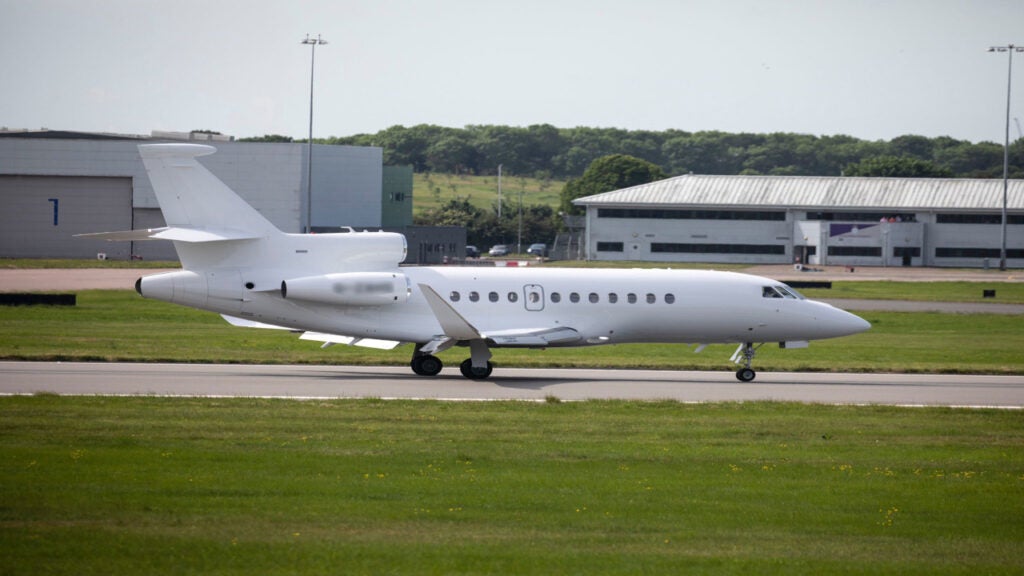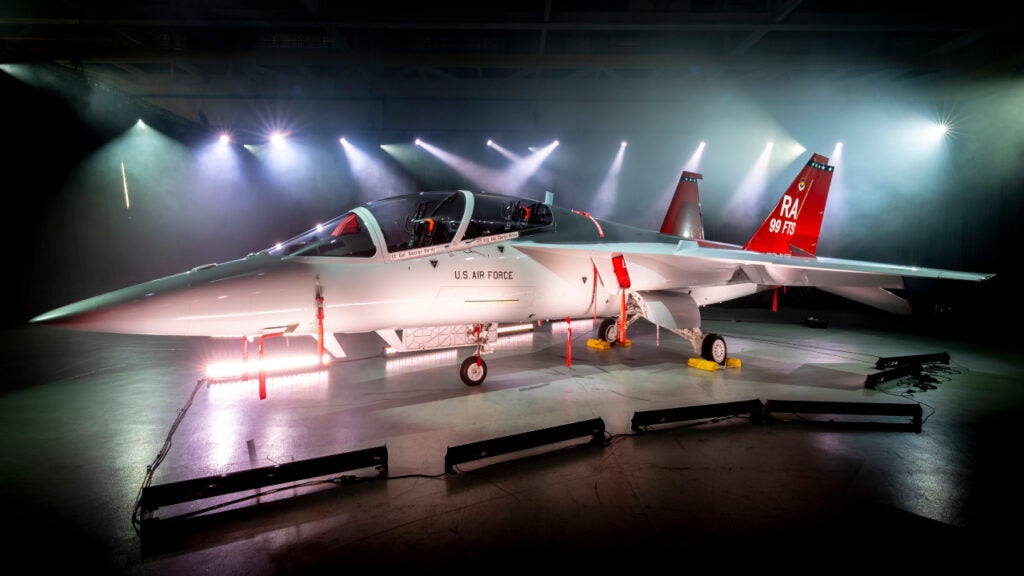
The Harrier, which first entered service with the Royal Air Force in 1969, is famous as the world’s first fixed-wing VSTOL (vertical or short take-off and landing) strike aircraft, capable of operating from short landing surfaces, aircraft carriers, unprepared strips, including grass strips, and to take off and land vertically.
The Harrier II (AV-8B), manufactured by British Aerospace and McDonnell Douglas (now BAE Systems and Boeing), replaced the HS Harrier in the UK Royal Air Force and in the US Marine Corps in 1985.
Harrier GR9 upgrade
The GR9 is an upgrade of the GR7. The GR7 has been in service since 1995 with the UK RAF and been operationally deployed in the Gulf, the Balkans, Sierra Leone, Iraq and Afghanistan. All 69 of the RAF GR7 fleet are being upgraded by BAE Systems to the GR9 standard, which includes improved weapon-aiming systems and improved navigation, and adds new weapons to its arsenal.
The current versions of the Harrier are the single-seat GR9 and the T-12 two-seat trainer aircraft which can also be used in combat. The Harrier GR9 made its first flight in May 2003 and was accepted into service in September 2006. The in-service date (ISD) was defined as 24 operationally-capable GR9 and one T-12. The remaining 45 aircraft were delivered through to 2009. Two GR9 were deployed to Afghanistan in January 2007, as part of the Nato International Security Force (ISAF).
The UK Royal Navy Sea Harriers were retired in March 2006. The RAF / Royal Navy Joint Force Harrier, based at RAF Cottesmore, is now operated with RAF Harrier GR7/9 aircraft.
Harrier GR9 design and roles
The GR9 is a single-seat, multi-role combat aircraft that can operate at night and at low-light levels in extreme environments, from a wide selection of locations including aircraft carriers and forward air bases.
One of the main roles of the Harrier is close air support that involves launching air attacks against hostile targets in close proximity to friendly forces. Harriers are usually employed in direct support of ground troops operating against enemy troop positions, tanks and artillery.
Harriers are also used for the air interdiction role in which the aircraft carry out low or medium-level attacks using precision-guided, freefall or retarded bombs. Harrier GR9 is also deployed on strike coordination and reconnaissance (SCAR) operations.
The BAE Military Air Solutions business group carries out the upgrade of the GR7 aircraft to GR9 standard. The upgrade activities and Harrier GR7 maintenance activities are moved together in a ten-day ‘pulse’ through a joint upgrade and maintenance programme (JUMP) at RAF Cottesmore.
GR9 avionics
The aircraft is equipped with forward-looking infrared (FLIR) and night-vision goggles. The new navigation system on the GR9 provides high-accuracy navigation and includes a ring laser gyroscope inertial navigation system coupled with a global positioning system.
Tactical information exchange capability (TIEC) capability will be installed on the aircraft by the end of 2008. A team led by BAE with Rockwell Collins and General Dynamics is developing the TIEC capability, in order to network the RAF Tornado GR4 and Harrier GR9 jets, by installing and integrating link 16 and improved data modem (IDM) in the aircraft. The capability will integrate link 16 and IDM messages with the aircraft systems to provide the pilot and crews with enhanced situation awareness.
Targeting
The GR9 is fitted with the Lockheed Martin Sniper or the Selex TIALD 500 targeting pod. The improved pod enables pilots to find and identify groups or individual hostile soldiers in difficult terrain, for example small groups of insurgents in mountainous countryside.
The TIALD 500 is an upgraded version of the TIALD 300/400 series and incorporates a Denel medium wave (three to five micron) infrared camera, with a Selex 384 × 288 staring array. The new TIALD provides enhanced performance in terms of improved ranges for detection and identification. TIALD 500 is also equipped with transfer alignment capability which allows the pod sight to be aligned with the aircraft’s weapon boresight.
An urgent operational requirement for third-generation targeting pods for the GR9 was raised by the UK Royal Air Force and the MoD invitations to tender were issued in late 2006. Lockheed Martin UK was awarded the contract in February 2007 to supply the sniper advanced targeting pod.
Sniper is a third-generation advanced targeting pod and is equipped with a full motion video downlink. The downlink enables the ground troops to see the same Sniper display as that displayed in the Harrier cockpit.
The high-resolution optics in the Sniper allows pilots to detect, recognise and identify weapon caches and individuals carrying weapons while remaining beyond jet noise ranges. The downlink provides enhanced and real-time situational awareness to the ground troops.
Deliveries began in March 2007 and full capability deployment started in June 2007.
Both TIALD 500 and the Sniper provide SCAR capability. The improved optics and infrared pointers on the Sniper provide improved capability in terms of locating, identifying and handing off targets to other assets.
Harrier weapons
The Harrier is armed with general-purpose bombs and cluster munitions, Paveway laser and GPS-guided bombs against buildings, Raytheon AGM-65 Maverick infrared guided anti-tank missiles and AIM-9 Sidewinder infrared-guided air-to-air missiles.
The Raytheon Paveway IV precision guided bomb is the latest generation of the Paveway family and entered service on Harrier GR9 aircraft deployed in Afghanistan in December 2008. Paveway IV uses dual-mode guidance with laser guidance and GPS-aided inertial navigation that incorporates anti-spoofing and anti-jamming technology. The weapon has good manoeuvrability and following launch it can turn and attack a target behind the delivery aircraft.
The GPS/IN system is supplied by Raytheon Systems at Glenrothes, Scotland. In order to attack relocatable and moving targets or fixed targets, the pilot is able to switch between guidance modes as necessary before or after weapon release. Paveway IV will be fitted with enhanced mk82 500lb warheads designed by Raytheon Missile Systems in Tucson. EDO MBM Technology based in Brighton is responsible for the supply of the Paveway IV aircraft umbilical interconnect system and quad containers.
The Raytheon AGM-65 Maverick is a man-in-the-loop, low collateral damage, anti-tank and anti-ship, close air support missile.
The Brimstone anti-armour system was deployed on the GR9 from 2008. The MBDA UK Brimstone fire-and-forget missile has a millimetre wave seeker operating at 94GHz which provides all-weather day-and-night capability. The missile is armed with a tandem high-explosive warhead. The Harrier GR9 is not fitted with a gun but can be armed with rockets.
Rolls-Royce Pegasus vectored thrust turbofan engine
The aircraft is equipped with the Rolls-Royce Pegasus vectored thrust turbofan engine. The GR9 Harriers are fitted with the Pegasus mk105 engine and the GR9A Harriers are fitted with the higher-rated Pegasus mk107 engine providing 23,400lb thrust.
The aircraft with the higher rated engine have been modified to incorporate a new metal, high-fatigue rated, rear fuselage section. The T-12 combat trainers will retain the Pegasus mk105 engines.




